What Size Pool Pump Do I Need? What To Consider
-
- Last updated:
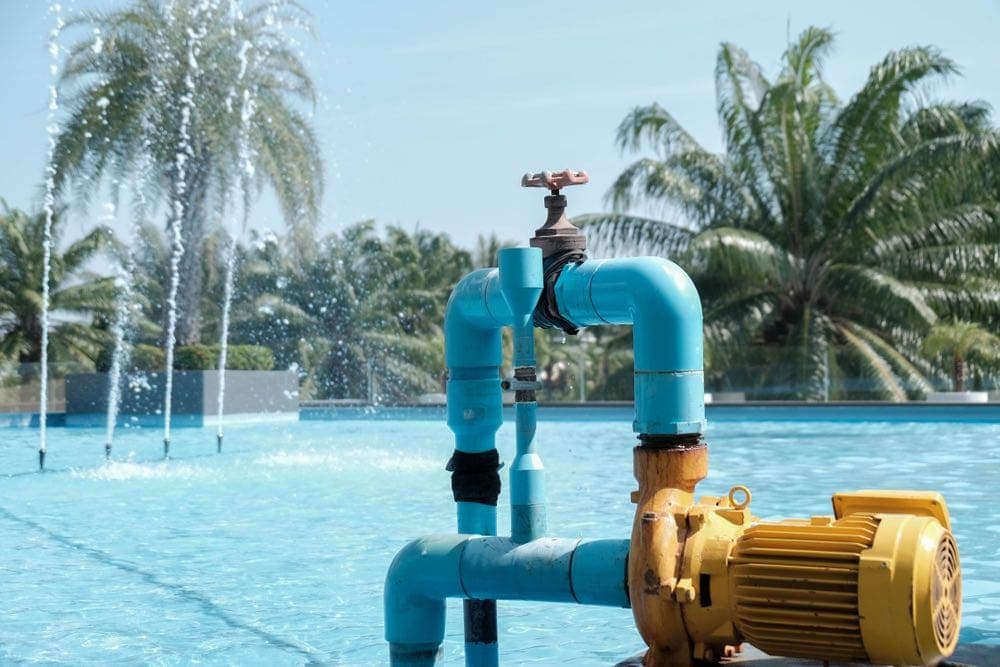

A new pool is a great thing to have and an exciting time for homeowners. There is nothing better in the hot and humid weather than being able to walk right out your backdoor and dive right into a pool. A common concern of homeowners, however, is the pool pump.
Many people do not know what size pool pump they actually need, and they generally end up going for one that is too big. While a pump that is too large and powerful will filter the water at a faster rate, the spike to your energy costs can be great.
To help residents find a cost-effective pool pump to filter their water, we have compiled the information below to help. We will share how to calculate your turnover rate, capacity, and flow rate. We will also tackle topics like feet of head, the amount of pipe you need, and even go over pool pumps for above ground pools.
Read on below so you can choose the perfect pool pump fit for your pool.

Find the Pool Volume
The first thing to do is to find the volume of the pool. This is how much water the pools hold, and how much water the pool pump is going to need to filter. The calculation is pretty basic, so no need to panic.
First, you need to get the surface area of a rectangular pool. You do this by multiplying the width by the length of the pool to get the square footage.
W x L = Sq ft
Next, you want to determine the depth of the pool. Be careful though, when you have different depths. If you are dealing with a shallow end (SE), and a deep end (DE), you need the average of the two so add the two depths together and divide by two. Once you have the average, multiply that by the square footage to get the cubic feet.
SE + DE = Combined Depth (CD)
CD ÷ 2 = Average Depth (AD)
AD x Sq Ft = Cubic feet
Now that we have the cubic feet we need to convert to gallons. There are 7.5 gallons in one cubic foot, so the next step is to multiply cubic feet by 7.5 which will give us the volume or total gallons.
Cubic feet x 7.5 = Volume
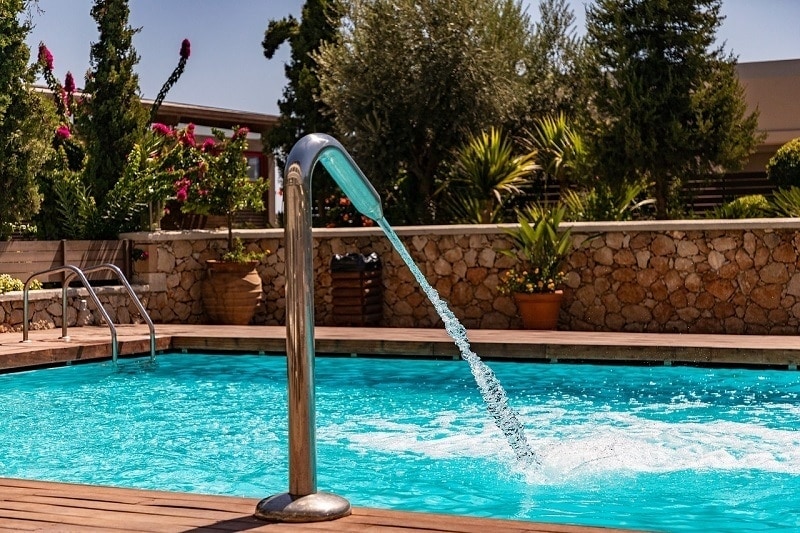
Find the Flow Rate
The next calculation you need to make is the flow rate. The flow rate is the amount of water per minute that is going to flow through the pump. In order to do this, you have to first find the gallons per hour by taking the volume and dividing it by 8; which is the number of hours we want to run the pump (more on that later).
Volume ÷ 8 = GPH
To convert this to minutes, all you have to do is divide the GPH by 60 to get gallons per minute otherwise known as the flow rate.
GPH ÷ 60 = GPM or Flow Rate.
As mentioned, you are going to need the flow rate to determine how strong the pump and filter needs to be, so hang on to this calculation for later. Until then, we are moving onto the turnover rate.
Turnover Rate
The turnover rate is the amount of time in hours that your pump will work to clean and clear the water in your pool. Many people get flow rate and turnover confused. Try to remember it this way; the flowrate is measuring how the water flows. It is the number of gallons that runs through the filter every minute.
The turnover rate, on the other hand, is the amount of time it takes the filter to clean the entire pool volume in hours. Generally speaking, you want to aim for a turnover rate of eight hours. Anything more can be a strain on your energy bills, and anything less won’t clean your pool’s water properly. We will get more into this, but first, this is how you calculate turnover.
Take the volume and divide it by the flow rate.
Volume ÷ flow rate = Turnover rate
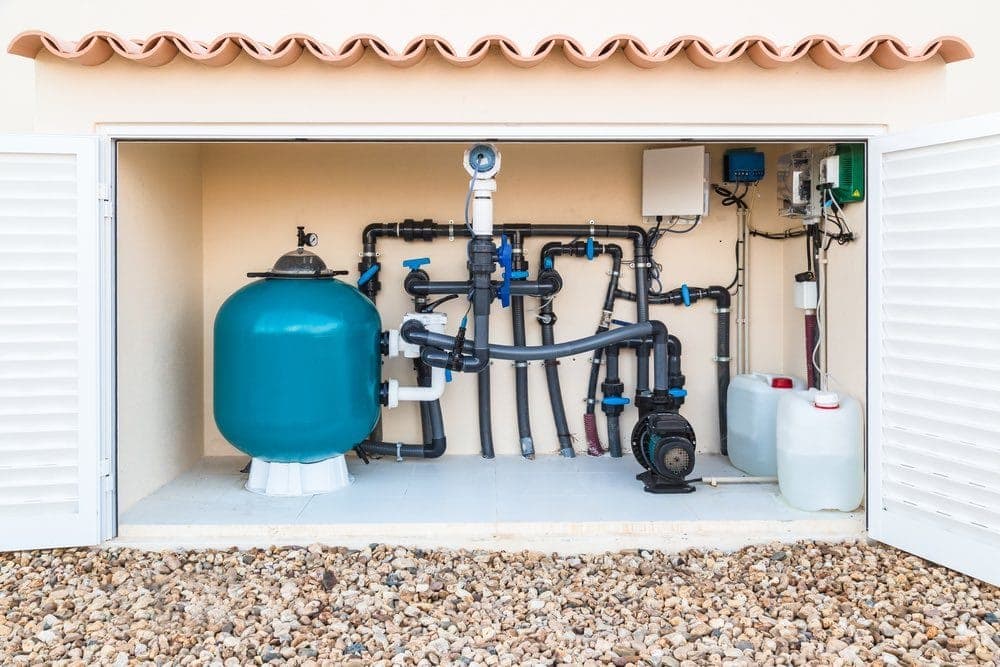
Circular Pools and Other Shapes
If you need to calculate for a pool that has different widths, the process is the same except for the square footage calculation. In that case, you would do the same process as if you had different depths. Add the widths together and divide them by 2. Then follow the instructions as shown.
W + W = Combined Width (CW)
CW ÷ 2 = Average Width
A circular pool is a little different. First, you need to get the radius of the pool. Measure the pool straight across. This will give you the diameter. Then divide that by 2 and you will have the radius.
D ÷ 2 = Radius (R)
The next step is to get the radius squared and multiply it by pi (3.14)
R x R = Radius Squared (RS)
RS x 3.14 = RS to p
Once you have this number, you can follow the same steps as above, but so you don’t have to scroll, here this is the rest of the equation.
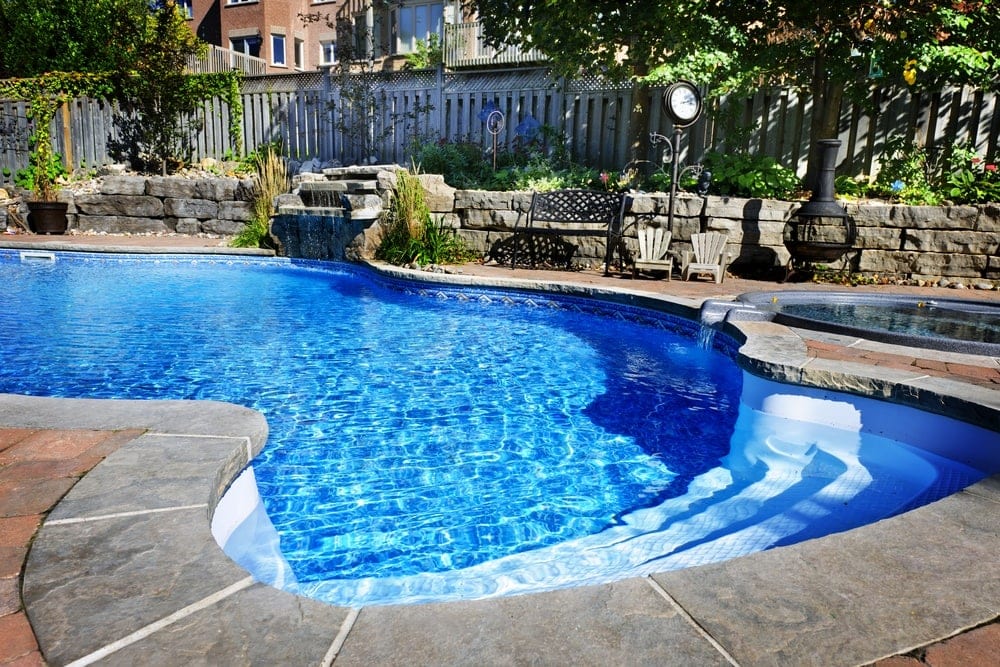
Find The Feet Of Head
Okay, now that you have your turnover rate and the flow rate, you will need to get the feet of head for your pool. Though this part can be a little more difficult to figure out, it is an essential piece of information for determining the size of your pool pump.
First off, the feet of head is the amount of friction your pool pump is going to be up against. Basically, it measures any opposing forces that will slow down the water, and cause the pump to work harder to circulate it through the pool.
These opposing forces are the lengths of pipe the water has to travel through including any turns, valves, angles, twists, the slope of the pump itself, and even the filter. To get the feet of head, you will first have to add up all of these lengths together.
Also, remember the flow rate we calculated above? You are going to need that number to calculate the feet of head, as well as the type of piping that is used, the diameter of the pipe, and the depth of the pipe. Plus, you want to know the angle of any turns such as 90-degrees or 45-degree angles.
Confused? Unless you are a mathematician, or install pool pumps for a living, don’t feel discouraged. Finding the feet of head for your pool pump is tricky and can take time. Thankfully, there are ways to get the answer without pulling your hair out.
Check out this Head Loss Calculator by PENTAIR. It is very exact, and all you need is your measurements and flow rate to get a detailed feet of head calculation that will break everything down for you.
Choosing Your Pool Pump
Now that all of the calculations have been completed, you are ready to find the right size pool pump for your pool. To recap, the two pieces of information you want to have with you is your turnover rate and your feet of head. Having your pool dimensions, and other info along for the ride is not a bad idea, but those two numbers are important for choosing the right size. If you are working with a salesperson, they will ask you for them.
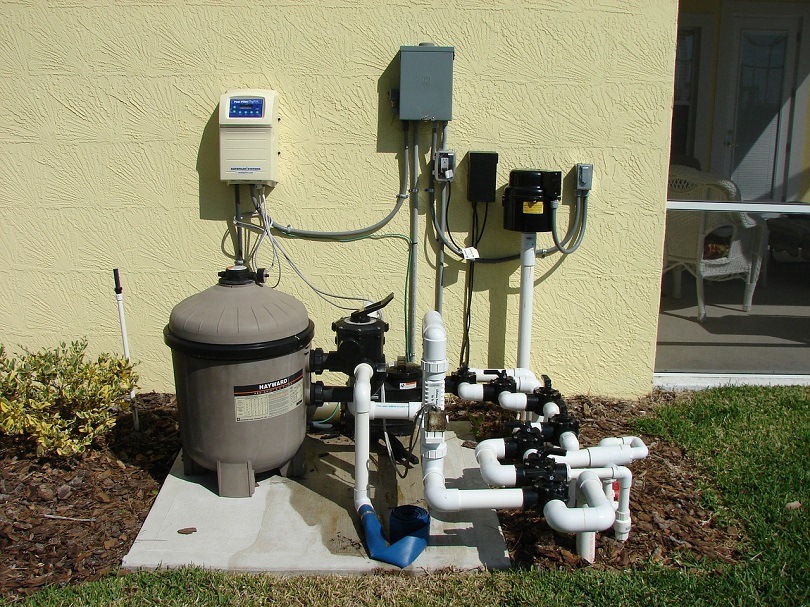
When choosing the right pump, you want to look at horsepower. Most manufacturers will have a section on the packaging, or the manual inside, that gives a chart of what HP you will need based on your turnover and head. If you remember, you want to aim for an eight-hour turnover if possible.
Many homeowners opt for a bigger with more HP so they can reduce their filtration time. While that is okay, it can be expensive. The more HP your pump has, the more costly it will be to run. On the other hand, you want to make sure you have enough HP to clean the entire pool in the eight-hour window.
If you are concerned about energy costs, keep this in mind: It is more cost-efficient to run a lower horse-powered pump for a longer time, then to run a higher horse-powered unit for a shorter amount of time.
Once you have your HP worked out, check out some other features such as energy-efficiency, speed control, motor type, and smart features. There are many options to choose from depending on your lifestyle, pools, and personal taste.
Above Ground Pool Pumps
What about above ground pool pumps? Pool pumps for ground pools are just as important. Luckily though, they are much easier to calculate because for the most part, above ground pools are pretty standard in size.
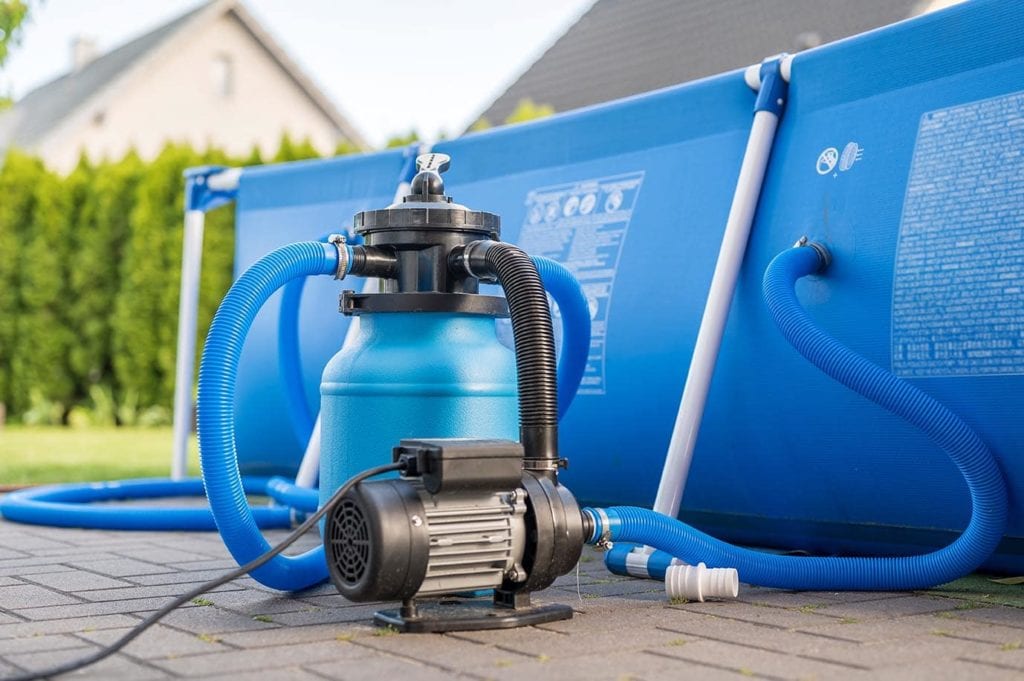
All you need to know is the length across the pool and how many gallons of water the pool holds. You can use the volume calculation for circular pools above to figure it out; which is not a bad idea because you will also need to know the flow rate.
Finding out the right size pool pump is pretty straight forward. You can actually use this cheat sheet below.
1-horsepower pump: Up to 24 feet across and 15,300 gallons or less
1.5-horsepower pump: Over 24 feet and 15,301 gallons or more
Yes, it is that simple. Just like the inground counterparts though, it is essential to the pools cleanliness and clarity that you have the right size pump. This is why you need the flow rate. When choosing a pump, just make sure it can handle the flow of water per minute.
Other than that, check to make sure you have the correct size filters, and you will be swimming in no time.

Conclusion
Though it may seem like a lot, figuring out the right size pool pump is important. It will keep your pool filtered and clear so you can swim with confidence. When you go to choose your system, just remember that turnover rate and feet of the head are the two most important factors to know. Knowing your flow rate, and volume is not a bad idea either, though!
We hope that this has helped to calculate your pool pump size easier. There are many variables to figure out, but if you are willing to do the math, you will have a clean and clear pool that is being filtered at a reasonable cost. Not sure how long to run your pool pump? Check out our page on the optimal time to run your system here.
Featured Image Credit: JackStar88, Shutterstock
Contents

